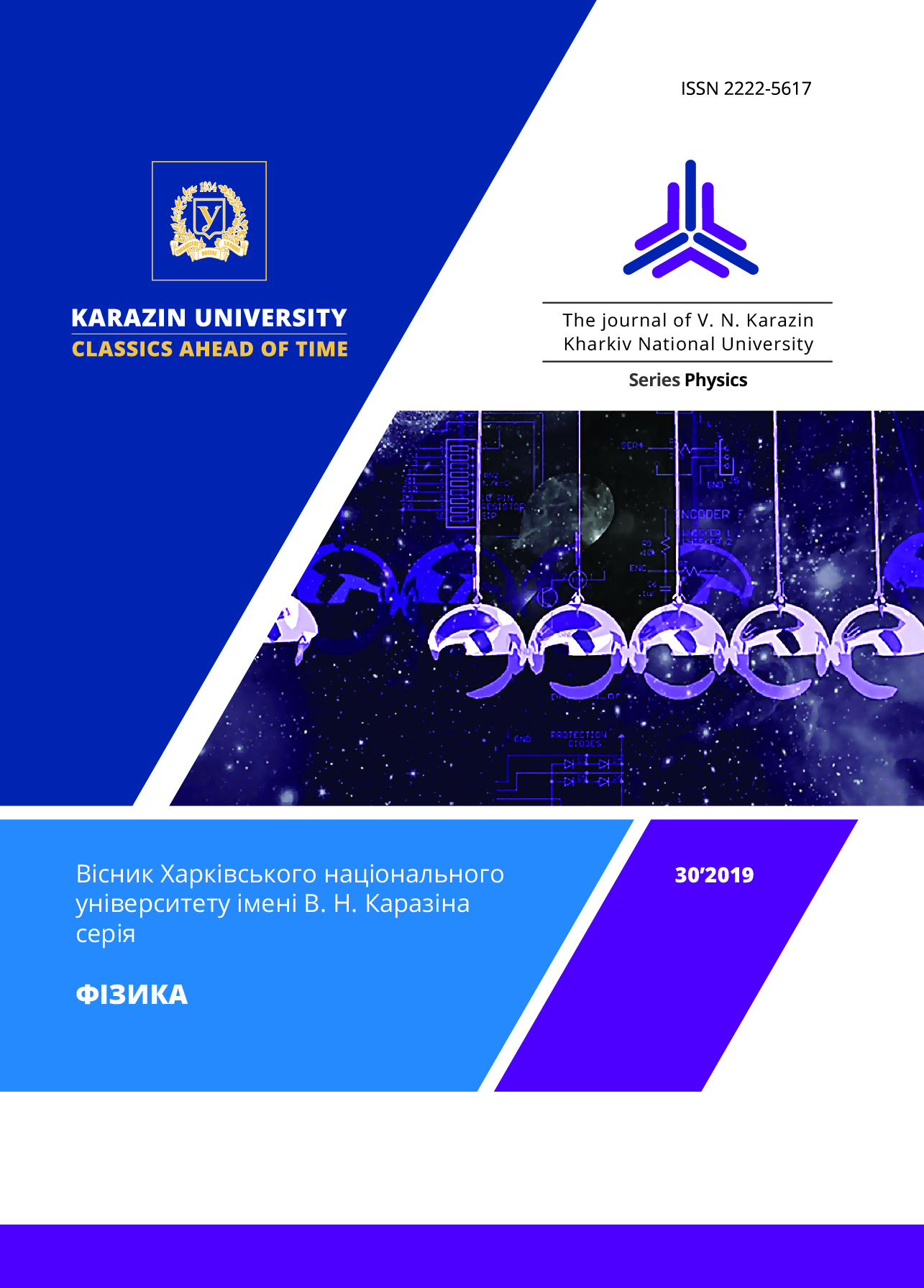The possibility to obtain ZnSe crystals with high structural perfection for cryogenic bolometric technics
Abstract
In this work the samples of ZnSe zinc selenide crystal grown from the melt by Bridgman method from high-purity (chemical and radio) raw materials were studied for further use in experiments on the search for neutrinoless double beta decay. The microstructure of the test samples was studied. Chemical selective etching, first of all, has allowed to determine the nature of distribution and sizes of area twinning, as well as the etch pits along twins boundaries. It is shown the figures found by chemical etching are the dislocation exits to the studied crystal surface. The dislocation density was estimated by counting the dislocation etch pits on the plane perpendicular to the growth direction and was 104 cm-2. As a rule, thermophysical conditions of ZnSe crystal growth, as well as high concentration of foreign inclusions and impurities in the crystal significantly affect the formation of twins and growth dislocations and are the cause of the optical, electrical, and mechanical heterogeneity of the material. The optical and electrical characteristics of the samples were measured. The absorption bands observed in the optical transmission spectra of the visible and IR ranges gave important information about the presence of local defects and impurities in the crystal, namely in 470÷550 nm and 580÷650 nm regions – absorption by point defects and in 3÷15 μm region – Fe2+, CSe and CSe2 absorption. The total transmission level in the visible range reached 60 %, which is lower than the theoretical one and due to scattering by defects. The phonon thermal conductivity of ZnSe sample was measured in the temperature range 5÷298 K. Based on the approximation of obtained temperature dependences of the thermal conductivity, it was shown that the phonon mean free path at low temperatures is comparable with the distance between twins’ boundaries in the sample.
Downloads
References
C. Enss, D. McCammon. J. Low Temp. Phys., 151, 5 (2008).
S. Pirro, C. Arnaboldi, S. Capelli, et al. Astroparticle Physics, 34, 344 (2011).
I. Dafinei, S. Nagorny, S. Pirro, et al. Journal of Crystal Growth, 475, 158 (2017).
F. Ferroni. IL NUOVO CIMENTO C, 33, 5, 27 (2010) DOI 10.1393/ncc/i2011-10696-1.
L.V. Atroshchenko, L.A. Sysoev. Kristallographiya, 5-6, 16, 1026 (1971) [in Russian].
V.M. Koshkin, L.A. Sysoev. Sbornik trudov “Monokristally i tekhnika”, VNII monokristallov, Kharkov v. 2, s. 57 (1970).
M.G. Mil’vidskii, B.V. Osvenskii. Strukturnye gefekty monokristallov poluprovodnikov, Metallurgiya, M. (1984), 256 s.
M.P. Kulakov, V.D. Kulakovskii, A.V. Fadeev. Neorganicheskie Materialy, 12, 10, 1867 (1976).
R. Triboulet. Semiconductor Science and Technology, 6, 9, A18 (1991).
M. Shone, В. Greenberg, M. Kaczenski. Journal of Crystal Growth, 86, 1-4, 132 (1990).
E.E. Lakin, I.V. Krasnopol’skii, V.P. Kuznetsov. Sbornik nauchnyh trudov “Scintillyatsionnye materialy”, VNII monokristallov, Kharkov v. 20, s. 16 (1987).
L.V. Atroshchenko, L.P. Gal’chinetskii, I.A. Rybalka, et al. Functional Materials, 12, 4, 610 (2005).
A.A. Chernov, E.I. Givargizov, Kh.S. Bagdasarov. Sovremennaya kristallographiya (Tom 3. Obrazovanie kristallov), Nauka, M. (1980), 407 s.
Ioan Dafinei, Mauro Fasoli, Fernando Ferroni, et al. IEEE Trans. Nucl. Sci., 57(3), 1470 (2010).
A.T. Lonchakov, V.I. Sokolov, N.B. Gruzdev. FTT, 47, 8, 1504 (2005).
Kazuo Nakamoto. Infrared and Raman Spectra of Inorganic and Coordination Compounds, Part B: Applications in Coordination, Organometallic, and Bioinorganic Chemistry, 6th Edition, John Wiley & Sons, New York. (2009), 424 p.
Glen A. Slack. Phys. Rev. B, 6, 10, 3791 (1972).
R. Berman. Teploprovodnost’ tverdyh tel, per. s angl. L.G. Aslamazova, pod red. V.Z. Kresina, Mir, M. (1979), 286 s.
G. Zahn, B.A. Merisov, G. Kloss, et al. Cryst. Res. Technol., 23, 6, 509 (1988).
M.V. Kislitsa, G.Ya. Khadzhai, E.S. Gevorkyan, and R.V. Vovk. Low Temp. Phys., 45, 419 (2019).








3.gif)
